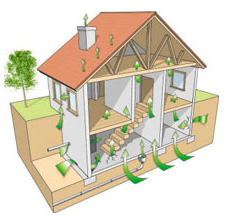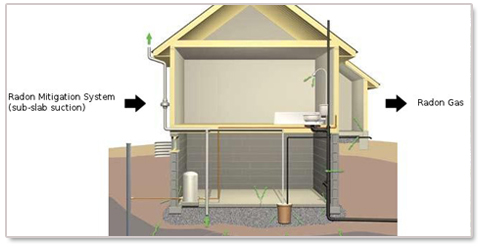Why is Radon Exposure so High in Iowa?
Most people have probably heard about radon, and how it is a dangerous gas that can not be seen, smelled, heard, or tasted but why are radon levels so high in Iowa? And how did they get that way?
Well, during the Ice Ages, when glaciers would move, they would pick up rocks from what is now Minnesota, Ontario, and Wisconsin and move them into Iowa. Many rocks house uranium and radium, which then releases radon. When the glaciers moved, they pummeled the rocks and broke them up, causing the rocks to release their radon gas.
For those that do not know why radon gas is such a bad thing, here are some facts:
- An estimated 400 deaths per year in Iowa are caused by radon-induced lung cancer.
- The entire state of Iowa is located in “Zone 1” which basically means that Iowa is extremely likely to have elevated levels of radon gas.
- The U.S. EPA has set the allowable radon level at 4.0 picoCuries per liter of air (that is the measurement for the amount of radon gas in the air).
- The average measurement of radon in buildings around Iowa is 8.5 pCi/L. This is more than six times the national average. As well as over double what the EPA has set for the allowable level.
- It has been found that about 5 in 7 homes in the entire state of Iowa have elevated radon gas levels.
Radon Poisoning in Iowa – Protect Yourselves Now
Because of these facts, all homes, businesses, and schools in the Iowa area should get radon tests. We here at Ameriserv Radon Mitigation of Iowa want to make sure your homes, businesses, and schools are safe for its inhabitants. We offer radon testing as well as mitigation services. These services will help you protect and prevent your home, business, or school from high levels of radon gas, keeping people safe and healthy.
While regular tests are smart, we want you to know the signs and symptoms that may mean radon levels are high in your home, business, or school. Some of these signs and symptoms include:
- Persistent cough
- Wheezing
- Heavy breathing
- Lung infections
These can also be very early signs of lung cancer, so if you experience these symptoms you should contact your doctor as soon as possible, as well as contacting us at Ameriserv Radon Mitigation of Iowa so we can possibly rule out the possibility of radon gas. If we test your home for radon gas and the results come back positive we can install a mitigation system into your home, business, or school. This will dispel radon gas from your structure.
To learn more about our radon gas testing or our mitigation services, our service area, or to schedule a test, give us a call today. We here at Ameriserv Radon Mitigation of Iowa want to help you feel safe and healthy in your home, business, or school. Contact us today!
 Our Response to COVID-19
Our Response to COVID-19 




